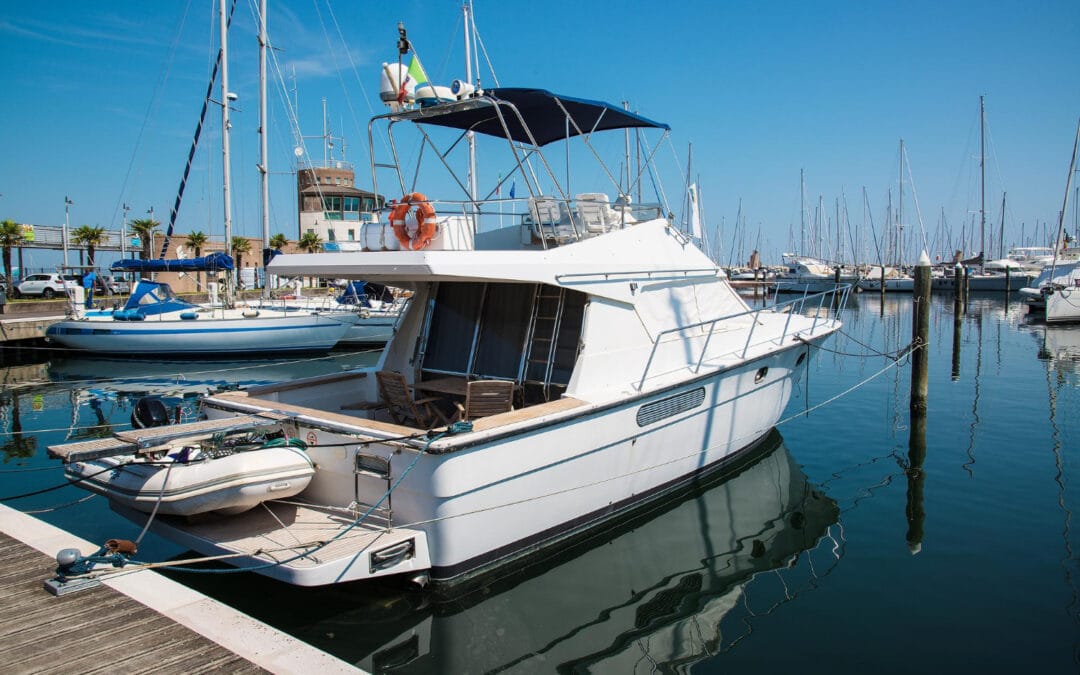Winter months may be a time to pause yachting adventures, but preparing your yacht for cold weather is crucial for maintaining its condition. Proper winterization protects your valuable asset from harsh conditions, ensuring it is ready to set yachting again when the sun starts shining.
With the right steps, you can prevent damage and extend the lifespan of your yacht. From safeguarding the engine to ensuring the interior stays dry, winterization involves a thorough approach to keeping your yacht in tip-top shape. Paying attention to these details will give you peace of mind throughout the season.
Knowing which areas of your yacht need attention helps avoid costly repairs later. So, gear up and get ready for effective winterization that will keep your yacht safe and sound until it’s time to hit the waves once more. Enjoy worry-free off-seasons and safeguard your yacht’s performance with these essential tips.
Preparing the Exterior
To start winterizing your yacht, focus on preparing the exterior. Begin with cleaning the hull thoroughly. Removing dirt, algae, and salt is essential to prevent corrosion and staining. Use a gentle pressure washer or a mild soap solution to clean the surface, ensuring every bit of grime is gone before applying a protective wax. Waxing forms a barrier against moisture and helps maintain the yacht’s finish during winter months.
Securing and covering equipment is the next crucial step. Make sure accessories like lifebuoys, fenders, and anchors are stored securely. Remove removable gear that can be affected by harsh weather, such as cushions or electronics. Use a durable cover to shield your yacht from the elements. Covers prevent water from seeping inside and protect against debris, snow, and UV damage.
Consider these steps for a solid exterior prep:
- Clean the hull thoroughly with a pressure washer
- Apply a protective wax layer
- Remove and secure removable equipment
- Use a yacht cover for protection
Following these tips keeps your yacht’s exterior safe during winter and ensures it’s in top shape for your next adventure.
Protecting the Interior
Maintaining the interior of your yacht during the winter is just as essential as caring for the exterior. Start by properly storing furniture and accessories. Remove cushions and fabrics that can absorb moisture and cause mold. Store these items in a dry, climate-controlled environment. If possible, prop open drawers and cabinets to allow air circulation and prevent odors.
Moisture control is key to avoiding mold and mildew. Use moisture absorbers or dehumidifiers to keep the interior dry. Check weather stripping on doors and windows to ensure they seal tightly and keep water out. Inspect plumbing and drainage systems for leaks or clogs that could lead to interior flooding over the season.
Here are ways to protect the interior:
- Store cushions and fabrics in a dry place
- Use moisture absorbers or dehumidifiers
- Ensure tight weather stripping on windows and doors
- Inspect plumbing for leaks
By taking these steps, you protect your yacht’s interior from winter’s chill and dampness, keeping everything fresh for when it’s time to hit the waves again.
Engine and System Maintenance
Taking care of your yacht’s engine and systems is critical during winterization. Start with the engine. Change the oil and filter, as old oil can contain contaminants that might corrode engine parts over time. Flush and replace the coolant to prevent freezing and corrosion. It’s also a good idea to add antifreeze to engine passages and pipes to safeguard against low temperatures.
Pay attention to the battery and fuel system. Disconnect the battery and store it in a dry, warm place. Regularly charge it during the off-season to keep it in good condition. For the fuel system, top off the tank to avoid condensation and add a fuel stabilizer to keep the fuel fresh.
Here are essential steps for engine and system maintenance:
- Change the engine oil and filter
- Flush and replace the coolant with antifreeze
- Disconnect and store the battery properly
- Add a fuel stabilizer to the tank
These steps ensure your yacht’s engine and systems stay protected during the cold months, ready to perform when warm weather returns.
Safety Measures and Checklist
Before storing your yacht for winter, conduct thorough safety checks to prevent issues during long-term storage. Inspect all safety equipment, like fire extinguishers and flares, to ensure they are functional and within expiration dates. Check the bilge pumps and ensure they work efficiently to prevent water accumulation.
Create a comprehensive winterization checklist to streamline the process. Include all measures discussed, from exterior care to engine maintenance. Having a checklist ensures no critical task is overlooked, providing peace of mind during the off-season.
Key safety measures and checklist points:
- Check fire extinguishers and flares
- Test bilge pump functionality
- Create a detailed winterization checklist
- Review and update contact information for quick access
Adhering to these safety measures keeps your yacht ready for long-term storage and prepared for future adventures.
Conclusion
Winterizing your yacht involves a series of vital steps that protect your investment and ensure it remains in excellent condition. By carefully preparing the exterior and interior, maintaining the engine and systems, and following a detailed safety checklist, you safeguard your yacht against winter’s challenges. These efforts pay off when yachting season returns, as your vessel will be well-preserved and ready for action.
At John Slate Yachts, we understand the importance of keeping your yacht safe and sound during the winter months. Whether you’re looking for guidance on winterization or exploring yachts for sale in Fort Lauderdale, FL, our expertise is at your service. Connect with us to ensure your yacht remains in pristine condition and continues to provide unforgettable experiences on the water.

